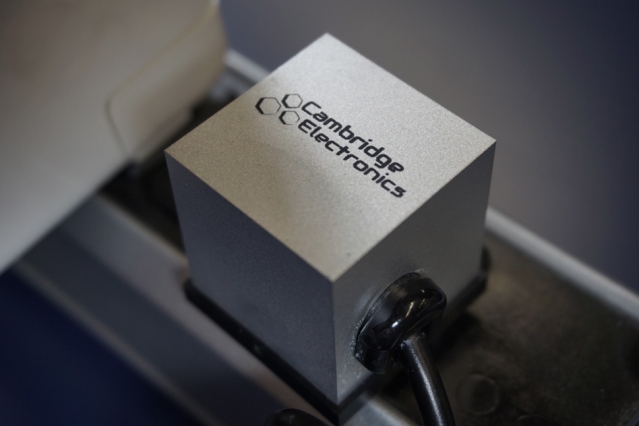
Shown here is the smallest laptop power adapter ever, made using GaN transistors.
Image: Cambridge Electronics
Recent discussions in the electronics industry have revolved around the future of technology in light of the perceived end of Moore’s law. But what if the iconic law doesn’t have to end? Researchers from MIT believe they have exactly what it takes to keep up with the constantly accelerating pace of Moore’s law.
More efficient materials
For the scientists, the trick is in the utilization of a material other than silicon in semiconductors for power electronics. With extremely high efficiency levels that could potentially reduce worldwide energy consumption, some believe that material could be gallium nitride (GaN).
MIT spin-out Cambridge Electronics Inc. (CEI) has recently produced a line of GaN transistors and power electronic circuits. The goal is to cut energy usage in data centers, electric cars, and consumer devices by 10 to 20 percent worldwide by 2025.
Semiconductors shaping society
Since its discovery in 1947, the transistor has helped make possible many wonders of modern life – including smartphones, solar cells, and even airplanes.
Over time, as predicted by Moore’s law, transistors became smaller and more efficient at an accelerated pace – opening doors to even more technological advancements.
Dominance of silicon
However, silicon has always reigned supreme in the field of electronics. In the past, as researchers came to understand that silicon would one day hit its apex, some began exploring the potential of new materials. For example, in the 1980s, people thought gallium arsenide based devices would provide the next generation of high speed circuits, such as the aluminum gallium arsenide-based high electron mobility transistor (HEMT) invented at Bell Labs. However, gallium arsenide based devices have only become standard in some important niche applications.
“People keep saying of other semiconductors, ‘This will be the material for the next generation of devices,’” Fan Ren, technical editor of the ECS Journal of Solid State Science and Technology, previously told ECS. “However, it hasn’t really changed. Silicon is still dominating.”
Transforming electronics
But the researchers at MIT believe that now, that could all change. According to CEI, the GaN transistors have at least one-tenth the resistance of silicon-based transistors. This allows for higher energy-efficiency and faster switching frequencies – with components that allow the device to be made continuously smaller.
Overall, this development could make electric cars cheaper and more powerful, data centers less energy-intensive, and laptop power adapters so small that they could fit inside the computer itself.
“This is a once-in-a-lifetime opportunity to change electronics,” says Tomás Palacios, co-inventor of the technology and past ECS member, “and to really make an impact on how energy is used in the world.”

